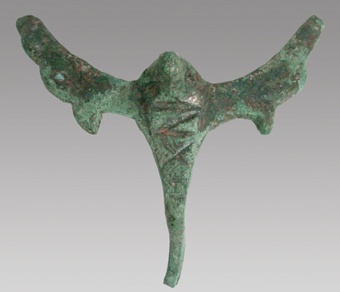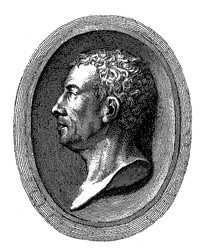Der Henkel war an einem Gefäß, vermutlich einer Kanne, angelötet, worauf antike Weichlotreste schließen lassen. Auf dem nach unten führenden Henkelstück, das immer schmaler zuläuft, bis es schließlich eine runde Form annimmt, ist eine kerbenförmige Verzierung eingemeißelt.
Oben wird der Henkel von einem Knauf bekrönt. Zu beiden Seiten legen sich die als florales Ornament ausgeführten Henkelarme um den Mündungsrand der Kanne, an dem sie angelötet waren. Das Ornament, wohl ein stark stilisiertes halbiertes Akanthusblatt, ist etwas grob und nachlässig ausgeformt. Es dürfte sich um eine provinzielle Arbeit aus dem 1.-2. Jh. n. Chr. handeln.
en

